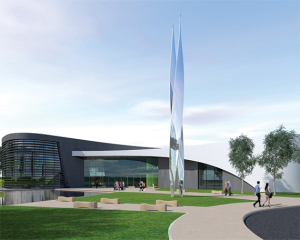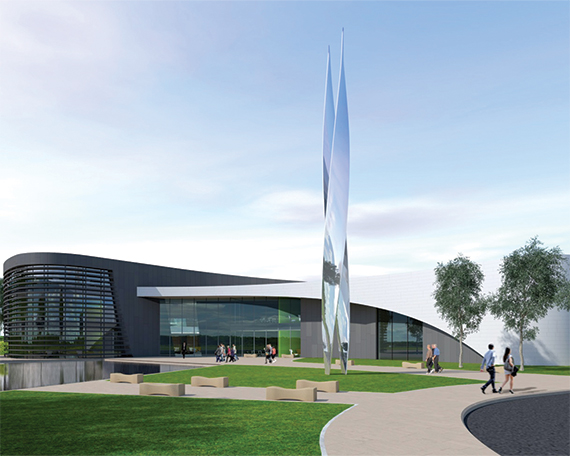Long-term government decision‑making stops during general elections, which is unfortunate for councils in Derbyshire and Nottinghamshire.
Having become the first places outside a major conurbation to propose forming combined authorities to drive economic growth, they must now wait until a new minister is in place before decisions are made on their future.
Combined authorities have been formed in Greater Manchester and most other conurbations, with differing packages of devolved powers agreed by the government, mainly covering transport and economic development. Counties looked on enviously and decided to copy them, and Derbyshire and Nottinghamshire were first to get their acts together.
Although one local enterprise partnership, called D2N2, covers Derbyshire, Nottinghamshire and the city councils of Derby and Nottingham, there are two county combined authorities proposed.
The thinking is that one would be unwieldy and the counties’ economies differ somewhat, though they will work closely together.
Administrative and economic geographies can be complex and local sensibilities awkward. For example, the northern regions of both counties also look to Sheffield economically, and these areas will also have an associate status in the Sheffield city region combined authority in South Yorkshire, as well as belonging to each county’s new combined authority. Confused? You will be.
Council and business leaders from Derbyshire and Nottinghamshire headed to London in mid-March to plead their case with ministers.
They said that with devolved powers over transport, economic development and training they could deliver 55,000 new jobs by 2023, set up a £1bn regional investment bank, improve public transport, expand East Midlands airport and do better to ensure availability of the right skilled labour.
Nottingham’s extended tram system is almost ready – an example of local government promoting infrastructure.

The city hopes to emphasise science-based growth, while Derby is based on heavier industry, with Rolls-Royce and train-maker Bombardier both large local employers.
Both cities have major regeneration sites in enterprise zones – Nottingham’s Boots Campus and Derby’s Infinity Park, a 100-acre business park project by the council and Rolls-Royce.
Local property figures want to see decisions from the new government. JLL lead director for Nottingham Matthew Smith says: “I think this idea of pooling and working together is long overdue, as you can’t change the geography but you can co-operate.”
Smith believes Nottingham needs to work with surrounding districts, as he sees tensions hampering development. “The city has very tight boundaries and has not allocated enough high-quality employment land because it can’t within that space – it has to go beyond the city boundary, and the same goes for some residential development,” he says.
“You wonder if the mainly ‘blue’ districts will take that growth when it is generated by the ‘red’ city and they can see it as a burden on their communities.”
One gain for the industry from the combined authority could be better delivery on this “duty to co-operate” across boundaries, imposed by the National Planning Policy Framework, says Mark Sitch, senior partner at planning consultancy Barton Willmore.
“With the abolition of regional planning policy we are reliant on the duty to co-operate, so the logical step will be for those combined authorities to develop a spatial framework dealing with housing and economic growth which can filter down to district level,” he says.
“I think some districts have been stumbling blocks on housing because they are supposed to accommodate growth generated by the cities, but may be reluctant to do that.”
Unresolved disputes over where the region’s HS2 station should go have “not presented a joined-up region to central government”, he adds.
John Forkin, managing director of promotional body Marketing Derby, agrees: “The big thing is the HS2 station and where that goes. It almost doesn’t matter where exactly, so long as there are fast links to Derby and Nottingham, but the councils need to agree where.”
Many other counties have embryonic plans for combined authorities, and if Derbyshire and Nottinghamshire go ahead, then others will surely follow.
Looking ahead – and south
Beyond Derbyshire and Nottinghamshire, there is less enthusiasm among East Midlands councils for combined authorities.
Councils across Lincolnshire are “not looking at proposing any combined authority until after the general election, when we see what statements come from the new government”, says Conservative county council leader Martin Hill.
He adds: “We would welcome devolved powers: in particular, over the NHS, much of the Department for Work and Pensions’ work, highways and economic development.”
Leicestershire has barely started talks. Sir Peter Soulsby, the Labour elected mayor of Leicester, has been sceptical about a formal combined authority with Leicestershire county council and its districts, at least while he fights an election in May.
Some districts were offended by an abortive attempt last year by Leicestershire county council to combine itself and the seven districts into a single body.
Tiny Rutland county council would probably be invited to join any Leicestershire initiative.
Northamptonshire county council said in December it would work with southern neighbours Buckinghamshire and Oxfordshire on economic development.
The trio plan to seek powers over transport, spatial plans, employment and skills programmes, with an unspecified “flexible governance structure” to deliver this.











